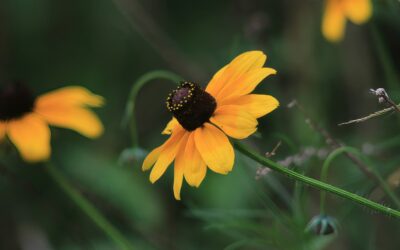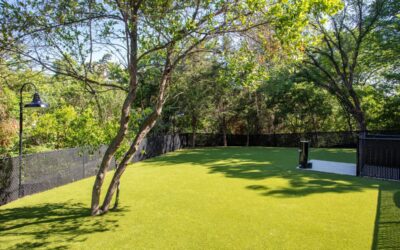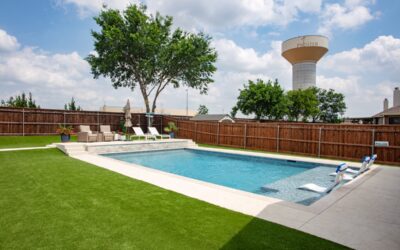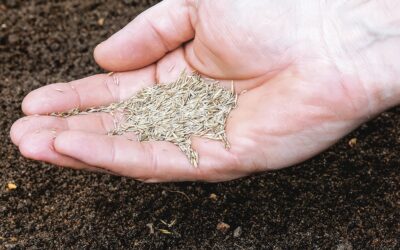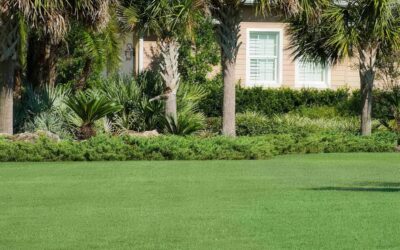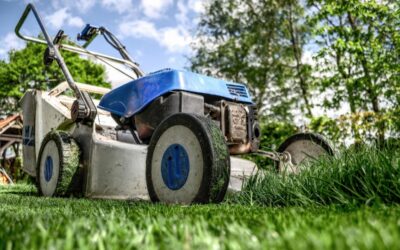With increasing numbers of Texan homeowners switching to artificial grass from real grass in recent years, what can you expect if you’re considering making the switch?
There are clear water-conservation, maintenance and long-term cost benefits of artificial grass but most homeowners will need to weigh up multiple factors before moving away from the traditional charm of real grass — and also justify the higher upfront cost of synthetic turf installations.
This applies whether you simply intend to replace a grass lawn or have grander ideas of re-landscaping your yard to include a pool area, kids’ play area or even a backyard putting green.
In this article, we’ll compare how real grass and fake grass stack up next to each other in terms of all the factors you’ll need to take into account.
You’ll see why artificial grass is becoming the “natural” choice for many home and business owners in the Dallas-Fort Worth area. Here’s what we cover:
Summary: Fake grass vs real grass
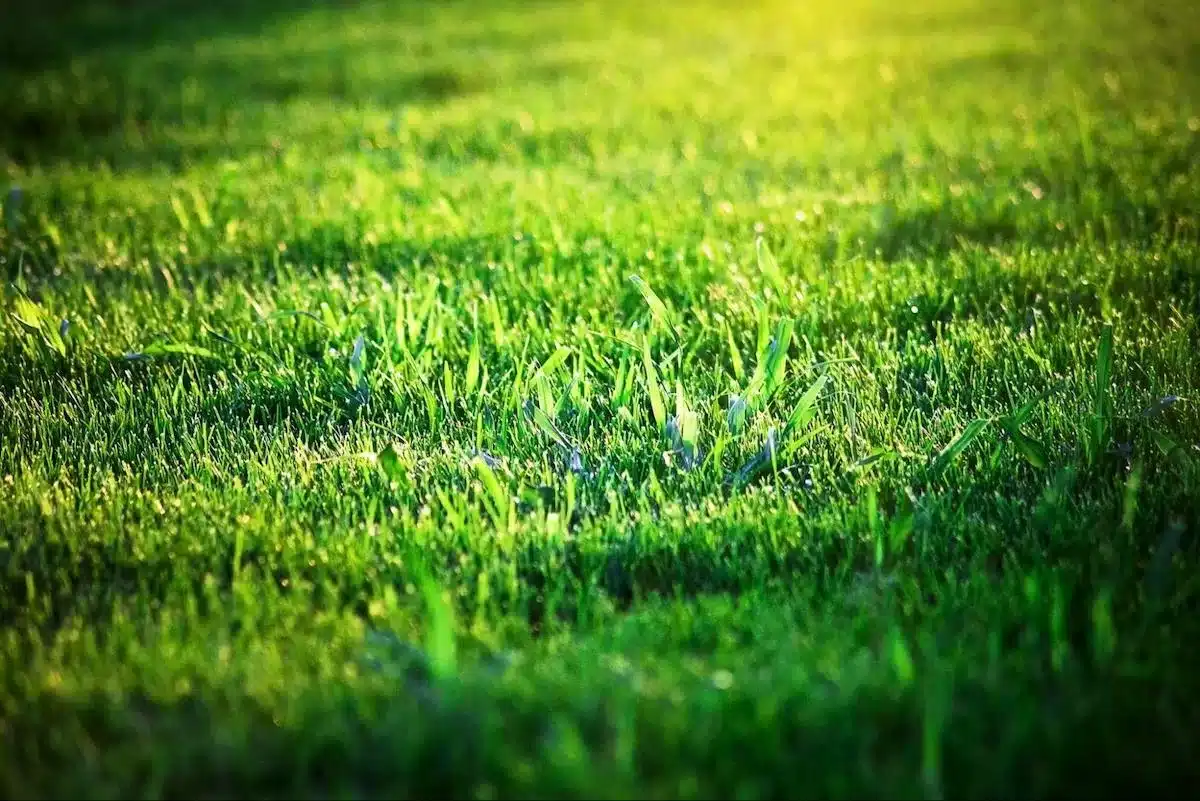
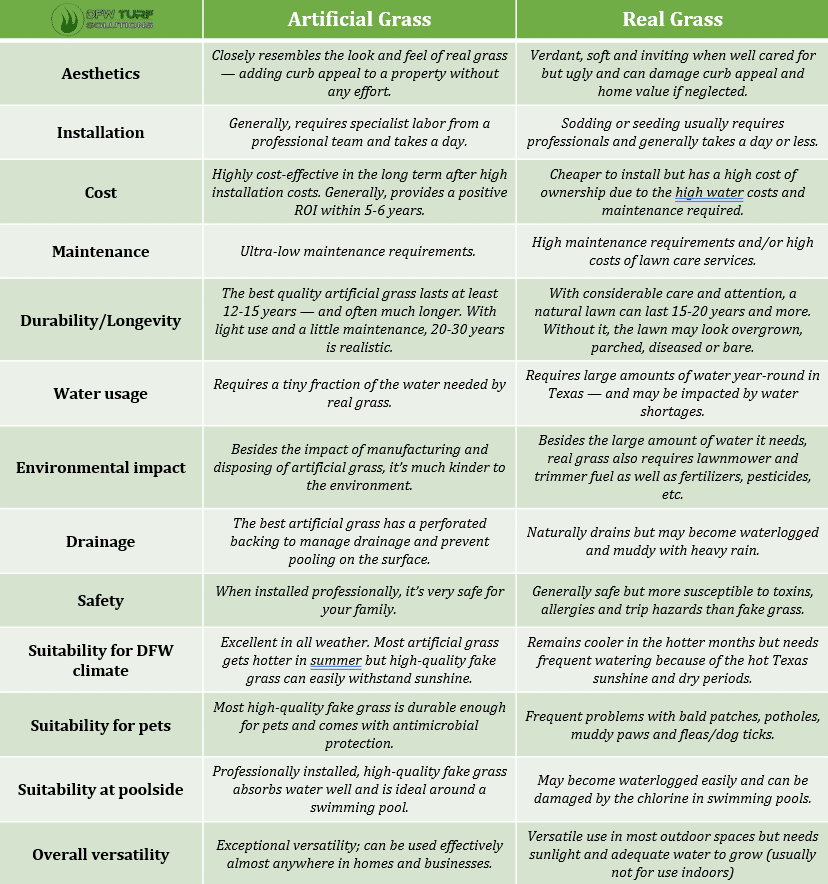
Aesthetics
There was a time when artificial grass couldn’t rival real grass for aesthetics. That’s changed.
If you love mowing and watering the lawn and painstakingly attending to your prized backyard in the evenings and weekends, nothing will ever replace the timeless beauty of natural grass.
For those of us who don’t crave the smell of freshly cut grass in the yard and value our spare time to do other things, artificial grass provides the pristine look and feel of real grass without the work.
You can still find spiky, shiny and … let’s face it…quite ugly fake grass if you opt for cheap, low-quality varieties.
However, homeowners in Dallas-Fort Worth now have many quality options that closely resemble the look and feel of real grass in the local area. It’s soft and verdant and maintains its evergreen beauty without constant watering or mowing.
Many people wouldn’t believe that a lawn that looks this good could be artificial:
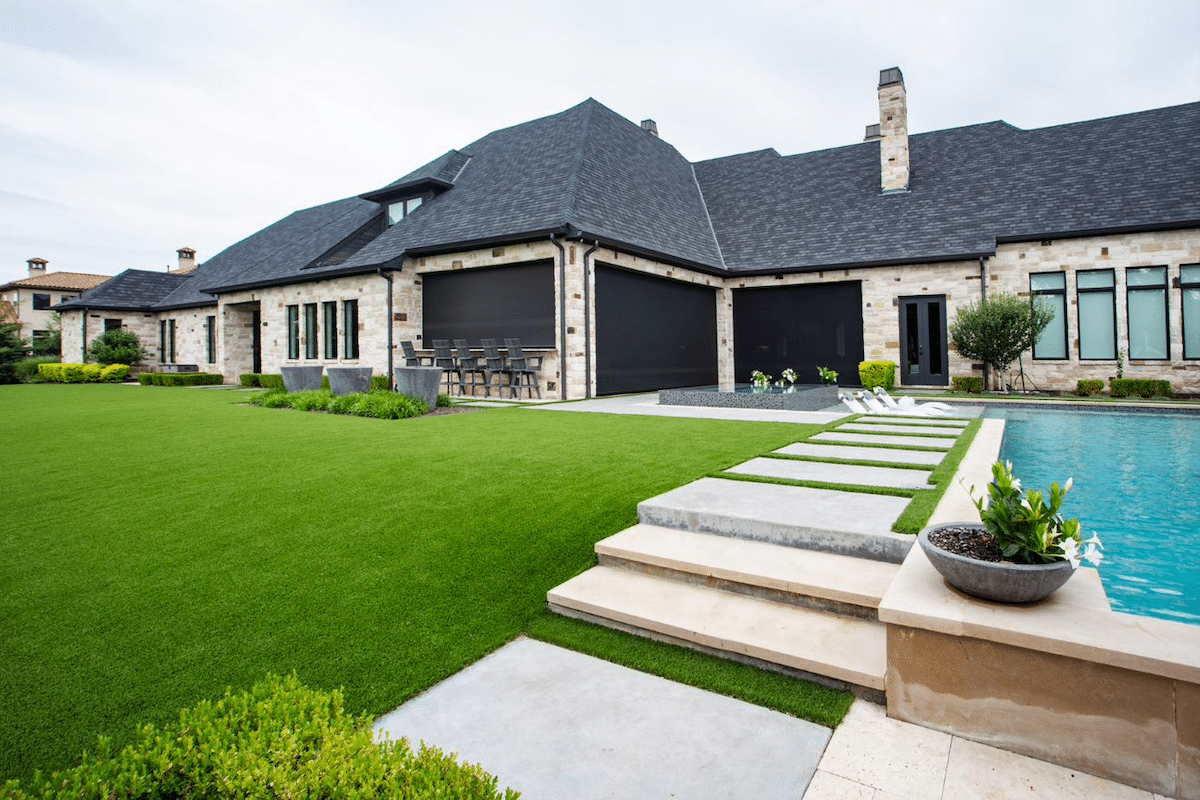
You’ll find many different materials, colors, blade lengths, face weights, blade shapes, densities, textures and design options — something to fit every purpose (not just backyard lawns but pool areas, putting greens, dog runs and more).
Both well-kept natural grass and artificial grass can add great curb appeal and value to your home — but artificial grass achieves that with virtually no effort after it’s installed.
If neglected, the aesthetic appeal of real grass vanishes rapidly — and can even end up leaving an eyesore with dead patches and bare spots.
At DFW Turf Solutions, we use high-quality polyethylene-based artificial grass products that look and feel like the real thing. They incorporate dual-toned blades with brown thatch for an ultra-realistic appearance:

Installation
The installation processes for artificial grass and real sod grass lawns are quite different but share a common characteristic: both generally require specialist expertise if the job is to be done to a professional standard.
While DIY is possible for both real and fake grass, it’s not recommended and may lead to problems and shorten the life of your lawn.
Installing artificial grass is about much more than simply rolling out a carpet of turf. The ground must be prepared, drainage checked, the road base laid and compacted, and weed protection added before the turf makes an appearance. Then there is cutting, shaping, adding infill and more.

Most synthetic grass installations in the Dallas-Fort Worth area are completed in a day by the team of experts at DFW Turf Solutions but larger or more complex areas take longer.
Cost of artificial grass vs natural grass
When we consider the cost of artificial grass vs natural grass, we must look at the long-term picture — beyond the installation costs.
Let’s consider a 1,000-square-foot lawn over a period of 20 years, which is a good lifespan for both a real grass lawn and a fake grass lawn.
The installation costs on their own make it seem like a no-contest: a 1,000-square-foot real grass lawn costs $1,500 to $2,000 to install (maybe a little cheaper if seeding rather than sod) while you can expect to pay in the region of $10,000 for a professionally installed, high-quality artificial lawn of the same size.
However, when we look beyond the fifth or sixth year after installation, we see the true picture emerging with costs: artificial grass is much more cost-effective than real grass over the long term.
The following provides a good graphical representation of the comparative costs:
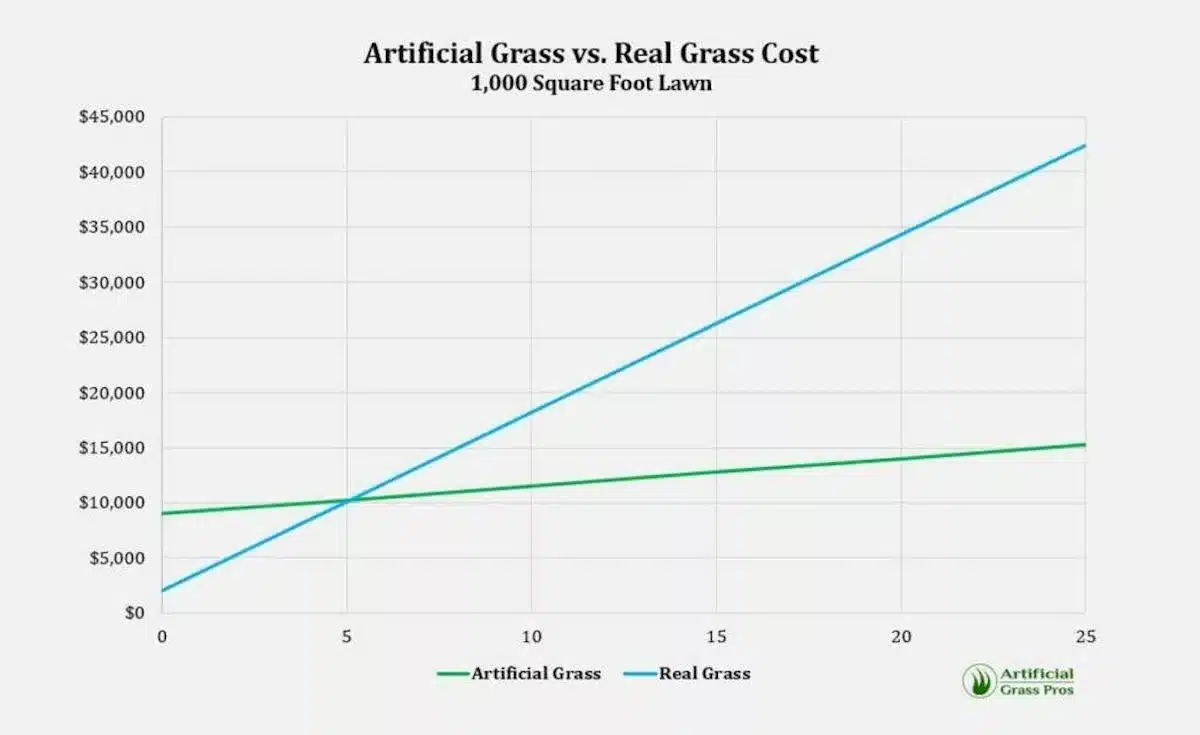
The cost benefits of artificial grass come in the years after installation, when its low cost of ownership, minimal maintenance requirements and great durability kick in. After around five or six years, the total cost of ownership (including installation) favors artificial grass — and the gap widens every year thereafter
Real grass lawns of 1,000 square feet or more generally cost at least $1,000 per year to keep looking immaculate (water, fertilizer, lawn services, etc.) while artificial grass needs next to nothing.
After 20 years, the artificial lawn has a total cost of around $15,000 total while the natural grass lawn’s cost is almost $45,000.
Artificial grass pricing is a little more complex than outlined here. This article on the cost of artificial grass looks at many other factors apart from the size of the area that affect the cost, such as the type of grass, materials used, labor, ease of access, face weight, drainage, landscaping requirements, etc.
Maintenance requirements

There’s little debate about this one: it’s almost impossible to keep a real grass lawn looking pristine in the Dallas-Fort Worth area without a huge amount of work while an artificial grass lawn will stay looking immaculate while you put your feet up.
An average American spends 70 hours a year on lawn and garden care. Whether you look after your lawn yourself or call in the lawn services team every few weeks, grass grows quickly in our climate and needs a lot of watering and management to stay healthy.
Real grass regularly requires the following maintenance:
- Mowing
- Edging/trimming
- Watering
- Aeration
- Overseeding
- Fertilizing
- Weed control
- Pest control
- Disposal of grass cuttings
Ultimately, you need more equipment, more time and more money to look after real grass than fake grass.
Synthetic grass is ultra-low maintenance. You can get by with the following simple steps:
- Removing debris
- Cross-brushing
- Occasional rinsing to remove dirt, dust and pollen
- Occasional weed removal
- Occasional stain removal
- Occasional replenishing of the infill
This adds negligible time or expense to the overall cost of ownership of artificial grass. With next to no effort, your fake grass area can look as splendid as this all the time:

Durability and longevity
This is a tough one to compare because the longevity of real grass depends entirely on its usage and how well it’s looked after.
Once installed, artificial turf looks pristine all year round with virtually no maintenance and will continue to do so for many years on end, With a professional installation and a little love and attention, you can expect synthetic grass to last at least 12-15 years — and often much longer. Two decades (20 years) is fairly normal.
Real grass, on the other hand, needs considerable attention almost as soon as it’s laid to keep it looking verdant and healthy. At certain times of the year, it needs more work to keep it looking the part, such as during the summer months. Also, if it is subject to high traffic or heavy usage (like with sports, children playing or dogs), real grass will struggle to retain its beauty.
For lawn lovers who put the work in and manage its usage, real grass lawns can last as long as they do! But let’s say 15-20 years on average as that seems to be the lifespan usually quoted by garden experts.
However, a neglected grass lawn rapidly deteriorates and can become an embarrassment: bare, dried out, overgrown or pest-ridden. It might even damage the value of your home.
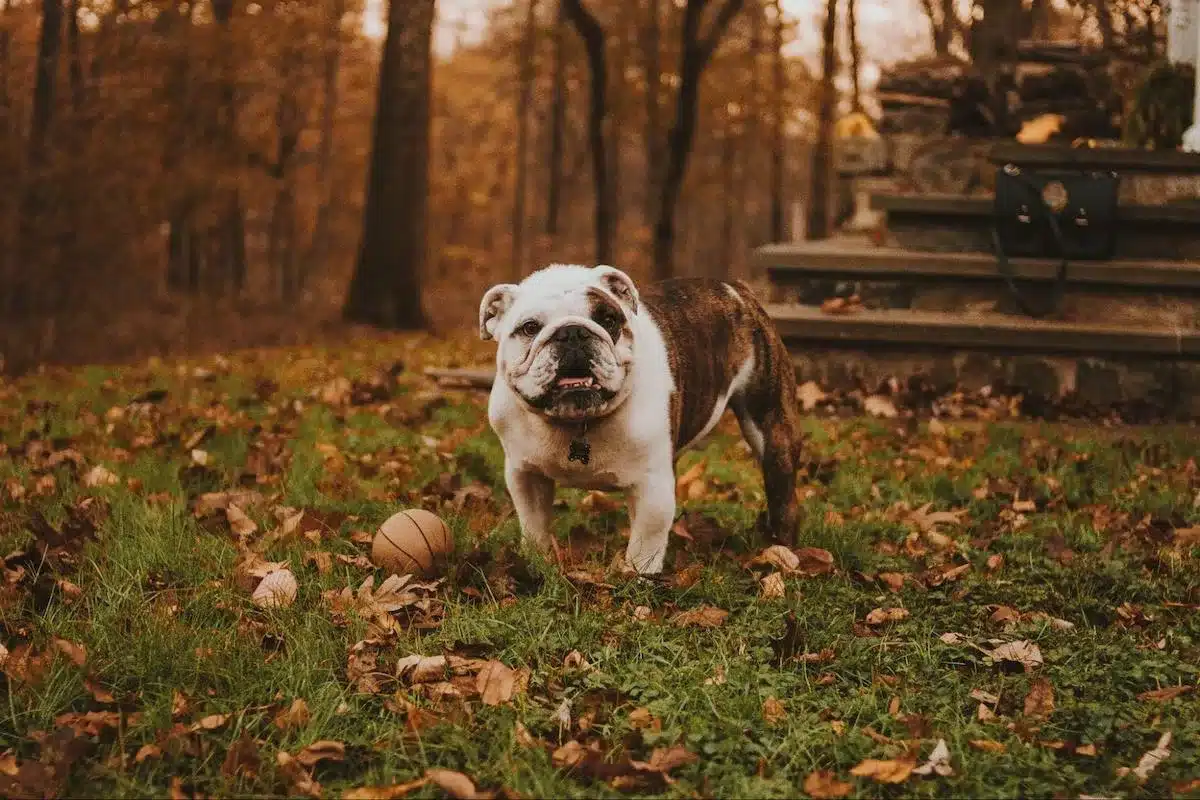
Water usage with fake grass vs real grass
The “water usage argument” falls heavily in favor of artificial grass for homeowners in the Dallas-Fort Worth area.
It’s practically impossible to maintain a beautiful natural lawn in the DFW area — or in many other areas of Texas — without running into water concerns. Drought conditions affect much of the state and water restrictions are now common. That’s bad news for real grass, which sucks up water at a rapid rate in the hot sunshine.
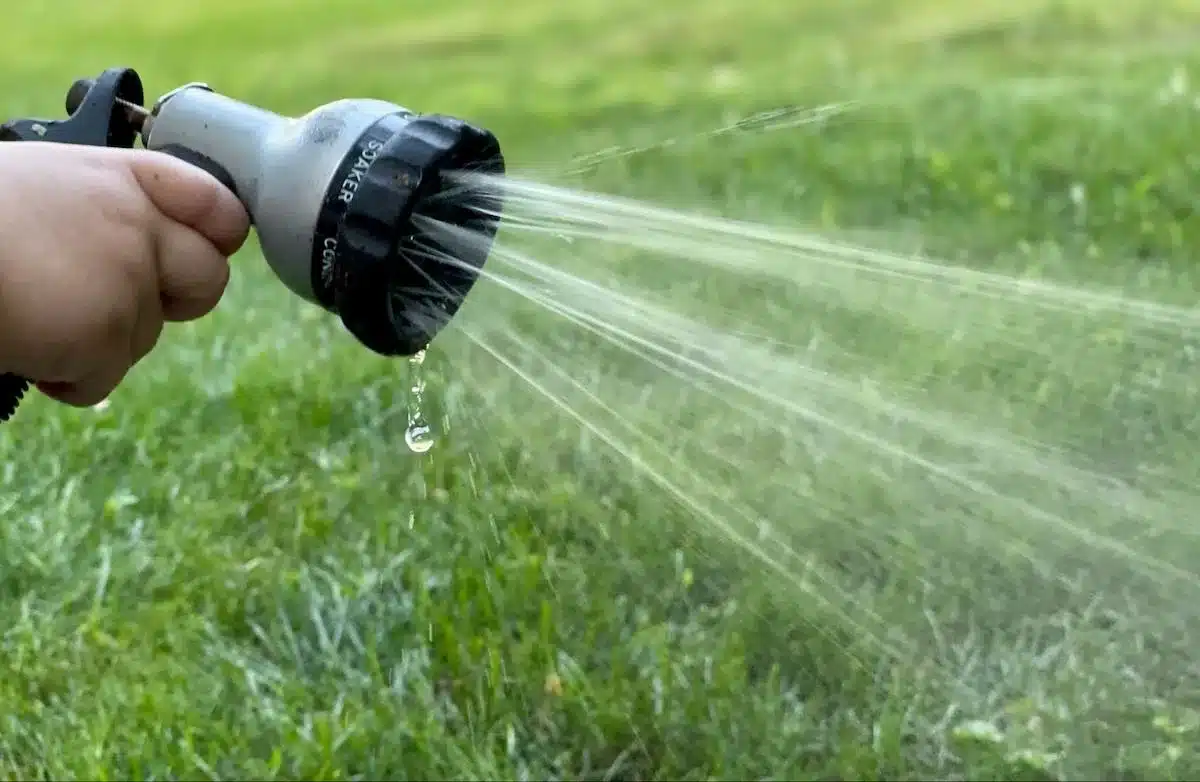
It’s not just about a higher water bill, though that’s almost certain if you need to water a real grass lawn a few times a week or more. It’s about water conservation, which has become a critical topic for Texas and the surrounding states.
Lawn irrigation uses, on average, 0.623 gallons per square foot. For a 1,000-square-foot lawn, that’s 623 gallons each time!
By contrast, a fake lawn will look fine without any watering. If you want to rinse your lawn down to clean it from time to time, that’s a good idea but it certainly doesn’t depend on water like real grass.
For each rinsing, you’ll need one-tenth of the water used to irrigate real grass — and much less regularly.
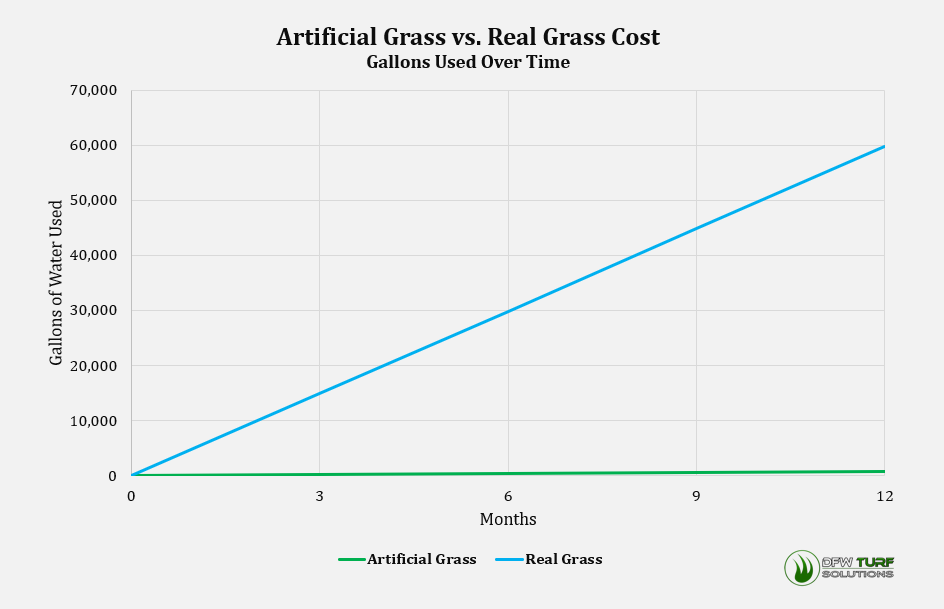
- Real grass: 623 gallons twice a week = 1246 gallons per week = 4984 gallons per month
- Artificial grass: 60 gallons once a month
- Real grass uses 83 times as much water as artificial grass
Artificial grass uses a tiny fraction of the water needed for real grass. That’s better for your water bill and better for the water supply in the DFW area.
Environmental impact
Besides the water usage argument, a lot of rubbish is written about the environmental comparisons between real grass and fake grass.
There is an environmental impact to manufacturing artificial turf and disposing of it at the end of its life. But that life is not a year or two — it’s two decades and more! So, the impact must be spread out over the life of the lawn if we are to fairly compare it to that of real grass.
Real grass is sometimes said to aid the environment as a living organism that gives out oxygen and takes in carbon in the form of carbon dioxide. However, when you mow the lawn, that carbon is going straight back to where it was taken from.
Natural grass requires mowing, fertilizing, weed protection and pest protection. This not only potentially adds to the toxic load in soil and runoff but also requires more fuel than you probably realize. And unless you compost your lawn clippings, they likely end up in a landfill.
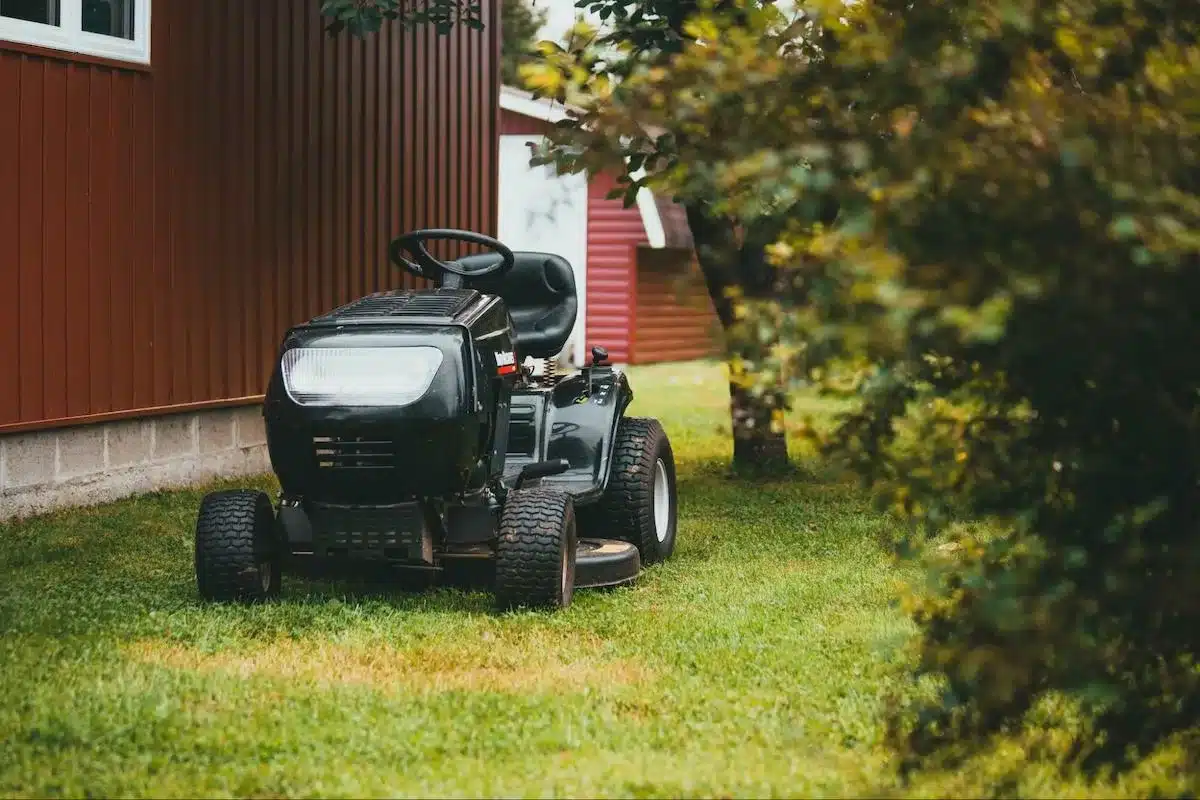
Did you know that running a lawnmower for an hour has a polluting effect similar to that of driving a car for 100 miles? Riding mowers are even heavier polluters and edgers, trimmers and weed whackers also need fuel.
So, if we’re talking about protecting the planet, which is the whole point of environmental friendliness, which is better over 20 years? Real grass or artificial grass?
Drainage
Some homeowners hold off on making the switch to artificial grass because of concerns over drainage in their yards.
Real grass tends to drain naturally, though it can get pretty muddy out there after heavy rains. The best artificial grass must manage drainage with tiny perforations in the backing, allowing water (and pet urine!) to pass through.

If there are additional drainage requirements in your yard, this can be assessed with an onsite inspection during the process of providing an estimate. Contact the friendly team at DFW Turf Solutions to initiate a free quotation.
Safety for your family
Whether you’re installing a new lawn, play area or poolside grass in your backyard or sporting area in a commercial enterprise, safety is a prone concern.
A backyard lawn is often used by the whole family so it needs to be safe, hygienic and inviting.
There are very few safety concerns with well-maintained real grass. Even where children are playing, real grass will cushion trips and falls and help prevent injury. However, the use of fertilizers and pesticides can create toxicity issues and allergies may also be a problem (grass and pollen allergies are common).
Artificial grass that is installed correctly and according to its intended usage is safe and faces none of the toxicity or allergy issues that may affect real grass. Plus, there’s no mud for mums and dads to worry about.
As long as playground areas and sports fields have adequate shock absorbers fitted under the grass to cushion falls, there’s little to worry about with synthetic turf. In fact, because the turf remains flat, smooth and pristine, it may be seen as slightly safer than real grass because there are fewer tripping hazards.

If you have pets, antimicrobial protection will be needed to deter bacteria and maintain hygiene and you may need to do a little more maintenance to keep the area clean and fresh.
Suitability for the DFW climate
The Dallas-Fort Worth climate is a challenge for many gardeners and homeowners. Unexpected winter freezes, frequent droughts, hot sunshine and blazing temperatures….none of this makes looking after a yard very easy.
With a real grass lawn, managing these climatic factors can be tough, especially when the water that’s required to keep the grass healthy is not available. Real grass tends to stay cooler than artificial grass in hot summer months but can dry out easily and become parched. Conversely, in heavy rain, the area can become flooded and will need to dry out thoroughly before being used again.
Even high-quality artificial grass can get hot in the middle of summer but it should still be comfortable to sit on and certainly doesn’t burn in direct sunlight, as some claim.
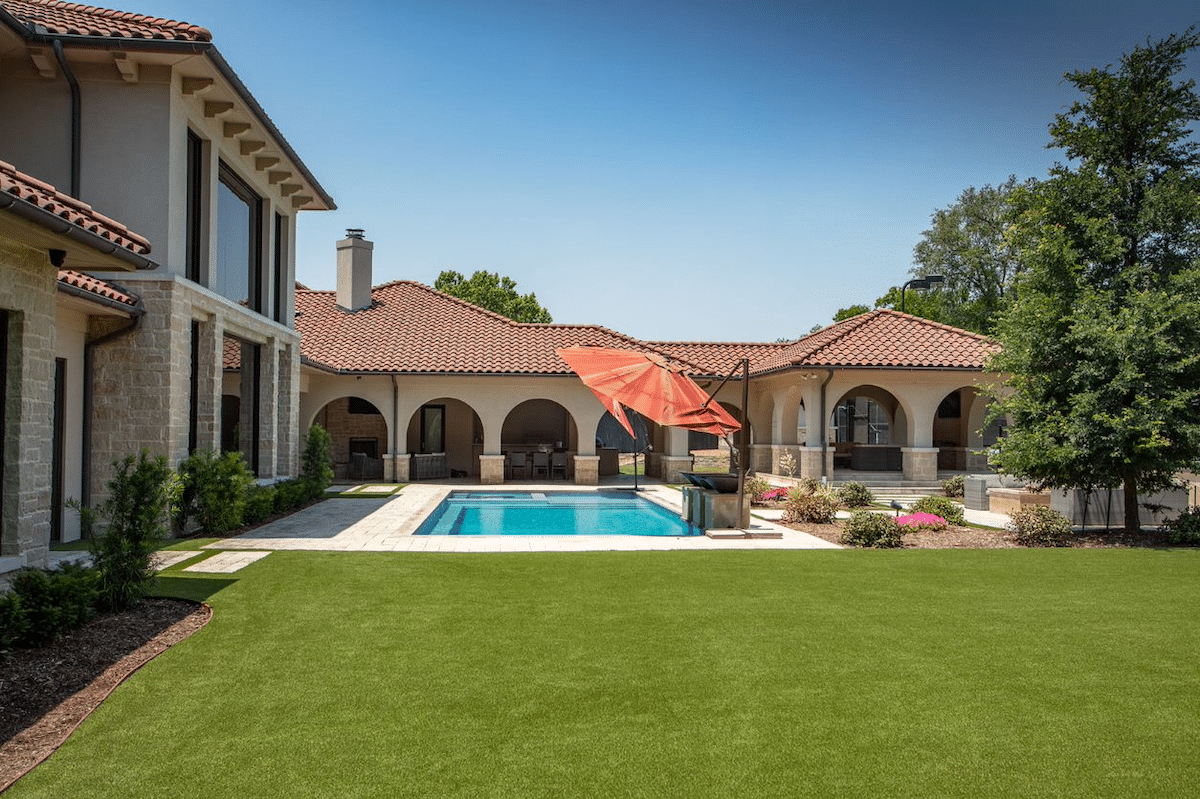
The artificial turf installed by DFW Turf Solutions is designed to withstand the local climate and remain looking beautiful all year round — for decades. Each blade is coated with a UV inhibitor that has a cooling effect and also prevents fading. The turf can drain water at a rapid rate (more than 30 inches of water per hour per square yard) thanks to its unique drainage system.
Put simply, we’ve never had any complaints from Dallas homeowners that the grass we installed has been damaged by the weather!
Suitability for pets
The best artificial pet turf is durable enough for the robust treatment it gets from dogs and other pets without deteriorating.

The turf also remains safe and hygienic because of the superior drainage systems of the best grass, coupled with some extra antimicrobial measures taken with the infill during professional installations. There are no problems with holes being dug or muddy paws and fewer issues with fleas, dog tocks, etc. as artificial grass does not provide the right environment for them to flourish (they need dark, moist areas).
Real grass naturally drains dog pee but may turn yellow in places. It is also susceptible to holes being dug and bare patches and it can also harbor fleas, dog ticks, etc. that can harm your dog’s health. Real grass may also become muddy when wet, which can mean muddy paws trailing through your home!
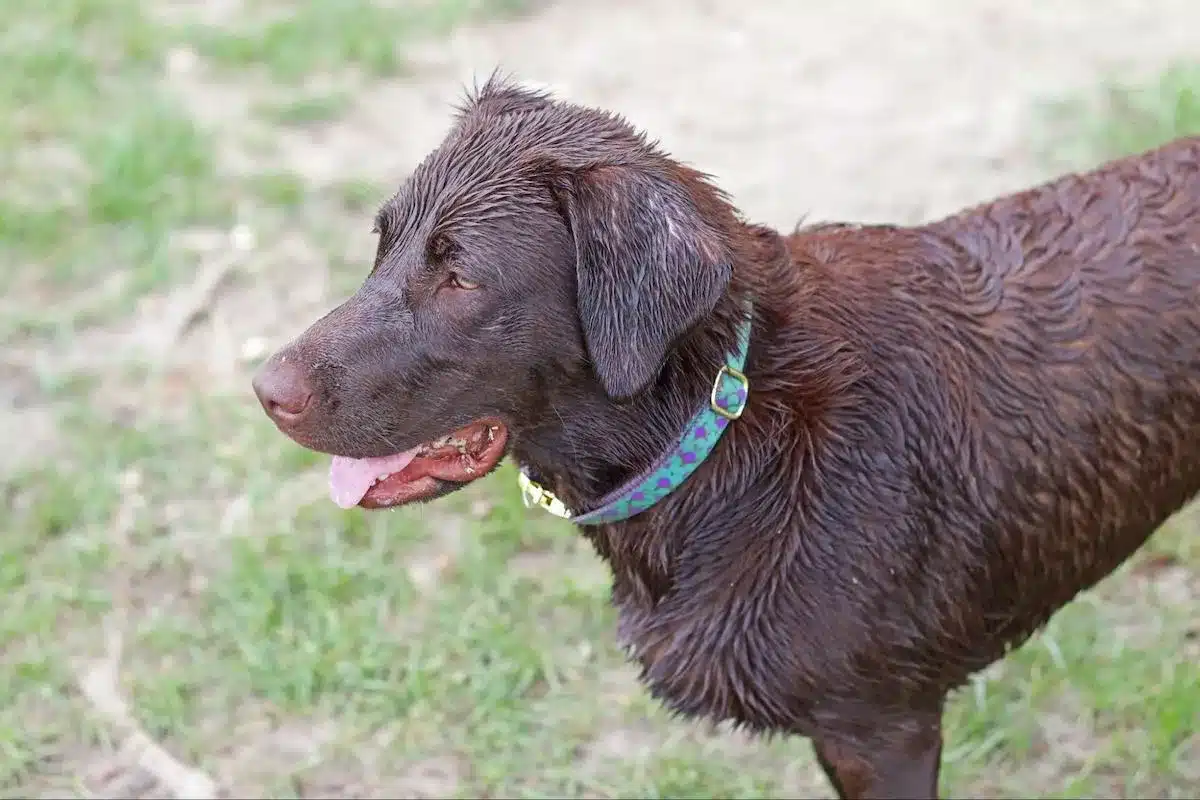
Suitability at poolside
Artificial grass is perfectly suited to life by a swimming pool and it is increasingly becoming the preferred choice of homeowners with pools in Dallas-Fort Worth.
This is because pool turf drains well and is not damaged by the chlorine content of swimming pools. Whether your fake grass is made from polyethylene, nylon or polypropylene, it will stand up well to chlorine.
Because high-quality pool turf is soft to the touch, bare feet are comfortable walking across the grassed area to and from the pool. If you have paving slabs leading to your pool, artificial grass looks great between the pavers like this:

UV-treated artificial grass is best for pool areas due to the long hours of sunlight exposure.
Natural grass usually works quite well by pools too. Diluted chlorine splashes won’t harm it — but it requires much more maintenance to keep it looking pristine, as you already know.
Also, great care should be taken when emptying your pool, as larger amounts of chlorine and exposure to the undiluted chemical can damage your grass.
Overall versatility
Both artificial grass and real grass are highly versatile and can look fantastic year-round — the main difference again being the amount of upkeep required.
Artificial grass can be used anywhere that real grass is used — and a few places besides. You’ll see it used not only for backyard and front yard lawns, sports fields, pool areas and play areas but for putting greens, balconies/decking, entertainment areas, roof terraces, commercial exhibition spaces, restaurants/hotels and gyms.

For its easy use indoors and in hard-to-reach spaces with a lack of sunlight, artificial grass is slightly more versatile than natural grass.
Which is best: artificial grass or real grass?
Your decision on whether to install artificial or real grass is likely to depend on your answers to four “how much” questions:
- How much is your installation budget?
- How much do you enjoy looking after your lawn?
- How much are you willing to spend per year on your lawn?
- How much value do you place on water conservation?
If you love looking after your lawn, are prepared to meet the annual cost of ownership and are not concerned by water restrictions — or are reluctant to meet the higher installation costs of artificial grass — you’ll likely opt for real grass.
If, on the other hand, you make any excuse to avoid yardwork, want to save water and money each year and are prepared to pay more upfront for savings in a few years, artificial grass is undoubtedly the better choice. Are you in the second bracket? If so, call 940.365.9165 and speak to the team at DFW Turf Solutions. We’ve been installing high-quality artificial turf in Dallas-Fort Worth since 2014 and will be happy to provide a free quote.

